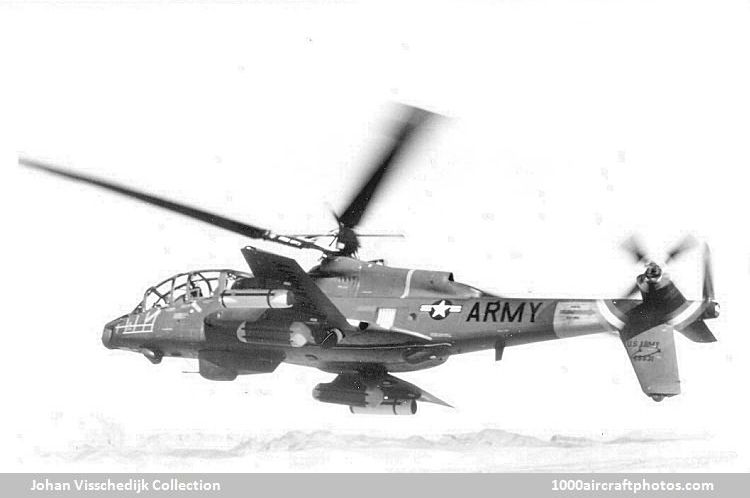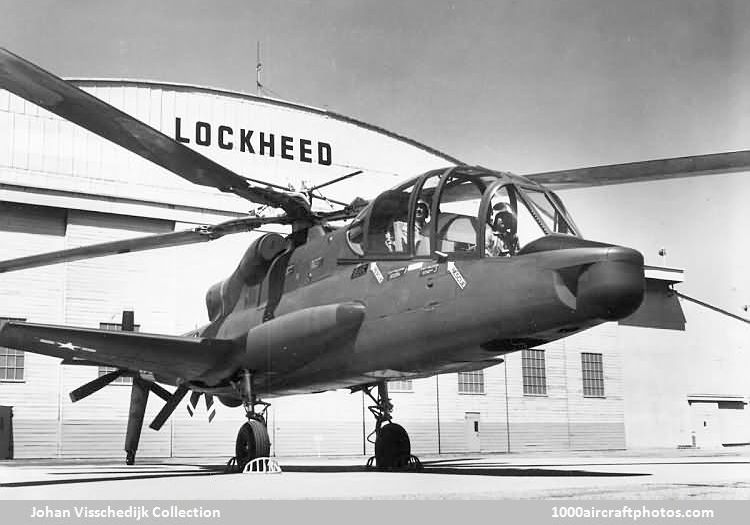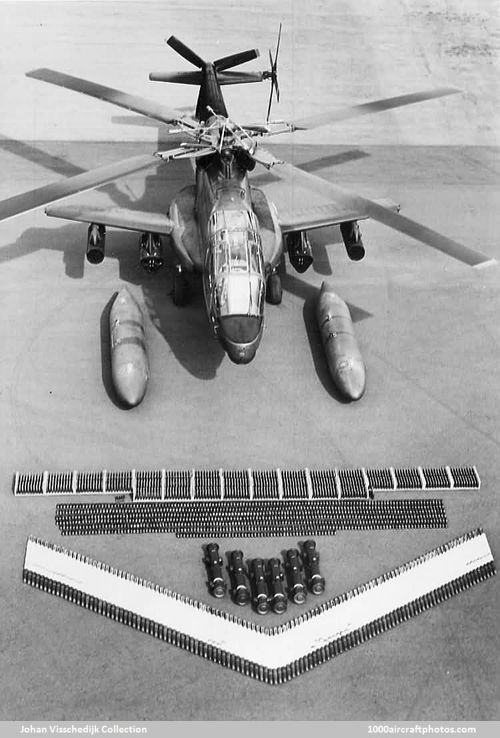12/31/2007. Remarks by Johan Visschedijk: "This tandem two-seat compound helicopter was designed for the US Army AAFSS (Advanced Aerial Fire Support System) competition of 1964, and Lockheed was declared the winner in November 1965, receiving an engineering contract on March 23, 1966, followed by an order for ten pre-production AH-56A-LOs, s/n 66-8826 to 66-8835, c/n 187-1001 to 187-1010. The first AH-56A flew for the first time at Van Nuys, California, on September 21, 1967, with Donald Segner at the controls. A contract for 375 production aircraft was received on January 7, 1968, the 10 pre-production aircraft were delivered by July 1968.
The aircraft was powered by a 3,925 shp General Electric T64-GE-16 shaft-turbine, that drove a four-blade rigid rotor, a four-blade anti-torque rotor, and a three-blade reverse-pitch, pusher propeller. Stub-wings attached to the fuselage fairings off-loaded the rotor during high-speed flight. Armament consisted of either a machine gun, a cannon, or a grenade launder in a nose turret, and six underwing hard points for anti-tank missiles and/or rocket pods and/or auxiliary fuel tanks.
Technical problems, like instability, eventually resulted in a fatal crash of the third AH-56A near Carpentina, California, on March 12, 1969. This, and significant cost overruns (67%), and pressure from the USAF, caused the US Army to cancel the production order for 375 aircraft on May 19, 1969, while the entire program was cancelled on August 9, 1972. Four aircraft have been preserved, the pictured 66-8831 is at Fort Campbell, Kentucky."


